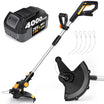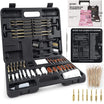Pruning in the autumn is essential for maintaining the health and appearance of your garden. Proper pruning encourages healthy growth, prevents disease, and prepares plants for the winter months. Here are some effective tips for pruning your garden in the autumn.
Why Prune in Autumn?
Autumn is an ideal time for pruning because:
- Dormant Period: Many plants are entering their dormant period, making it less stressful for them to be pruned.
- Disease Prevention: Pruning can help remove diseased or damaged branches, reducing the risk of infection spreading.
- Shape and Structure: Autumn pruning helps maintain the shape and structure of plants, ensuring they grow strong and healthy.
Tools for Pruning
Using the right tools ensures clean cuts and reduces damage to your plants.
- Pruning Shears: Ideal for small branches and stems.
- Loppers: Suitable for thicker branches that are hard to reach.
- Pruning Saw: Necessary for cutting large branches.
- Gloves: Protect your hands from thorns and rough branches.
- Sanitizer: Clean your tools before and after pruning to prevent the spread of disease.
General Pruning Tips
Follow these general tips for successful autumn pruning:
- Inspect Plants: Before pruning, inspect your plants for dead, damaged, or diseased branches that need removal.
- Cut at an Angle: Make cuts at a 45-degree angle, just above a bud or branch, to promote healthy new growth.
- Remove Crossing Branches: Eliminate branches that cross or rub against each other to prevent wounds that can invite disease.
- Thin Out Dense Growth: Thin out dense areas to improve air circulation and light penetration, reducing the risk of fungal diseases.
Pruning Different Types of Plants
Different plants have varying pruning needs. Here are some guidelines for common garden plants:
Trees
- Deciduous Trees: Remove any dead or damaged branches. Prune to maintain the tree's shape and structure.
- Fruit Trees: Prune to remove any suckers and water sprouts. Thin out branches to allow sunlight to reach the inner parts of the tree.
Shrubs
- Flowering Shrubs: For shrubs that bloom on new growth, such as roses, prune in autumn to encourage vigorous growth next spring. For those that bloom on old wood, like lilacs, wait until after flowering to prune.
- Evergreen Shrubs: Lightly prune to shape and remove any dead or diseased parts.
Perennials
- Herbaceous Perennials: Cut back to ground level after the first frost to tidy up the garden and prepare for new growth in spring.
- Woody Perennials: Trim back dead and damaged wood. Shape the plant as needed.
Avoid Over-Pruning
Over-pruning can stress plants and reduce their ability to survive winter. Here’s how to avoid it:
- Follow the One-Third Rule: Never remove more than one-third of a plant's total growth at one time.
- Prune Gradually: Spread out major pruning tasks over several seasons rather than doing it all at once.
Post-Pruning Care
After pruning, take steps to help your plants recover and thrive:
- Watering: Give your plants a good watering after pruning to help them recover.
- Mulching: Apply a layer of mulch around the base of plants to retain moisture and protect roots from temperature fluctuations.
- Fertilizing: Avoid fertilizing in autumn, as it can encourage new growth that may not harden off before winter.























Leave a comment
All comments are moderated before being published.
This site is protected by hCaptcha and the hCaptcha Privacy Policy and Terms of Service apply.